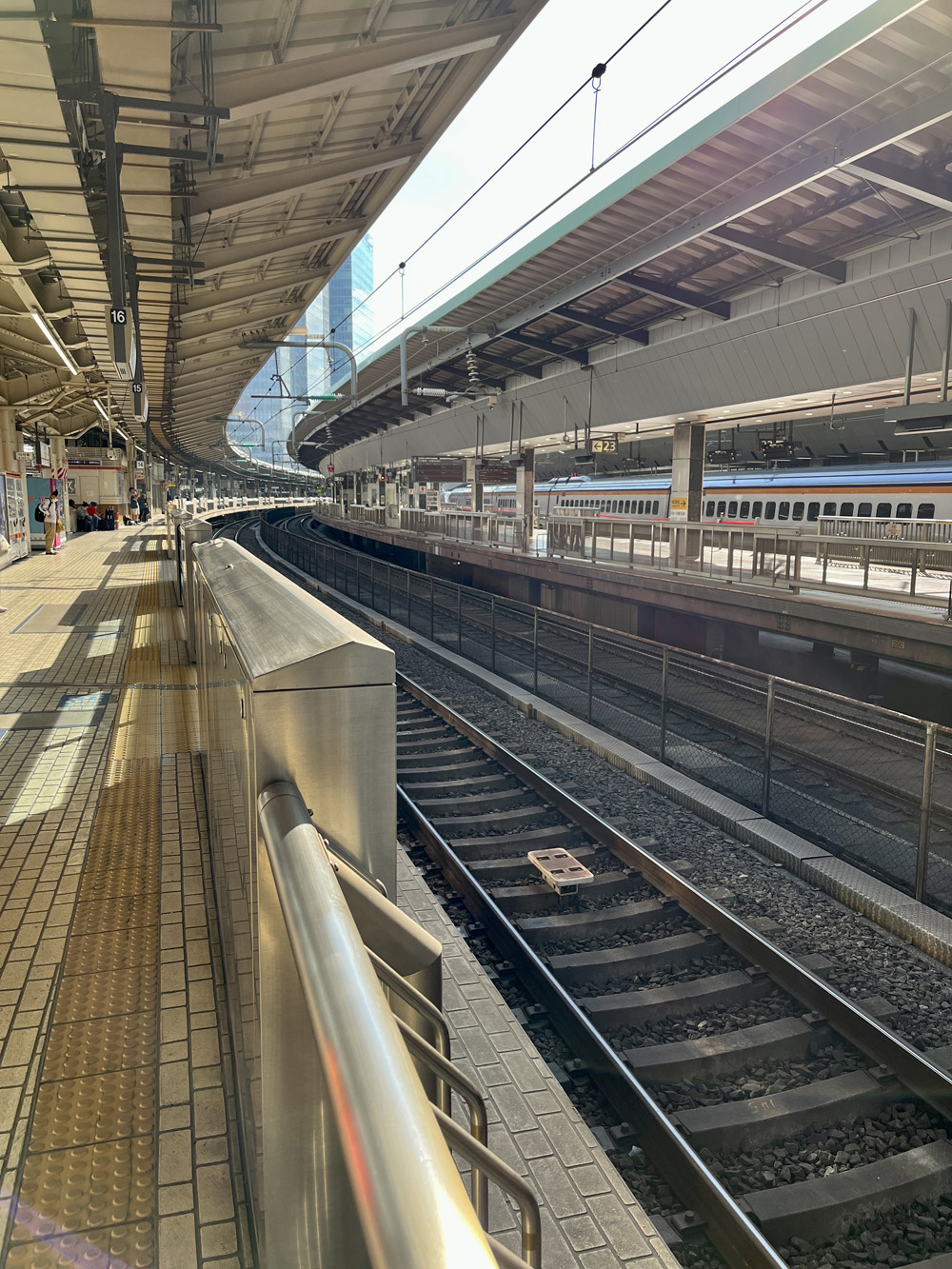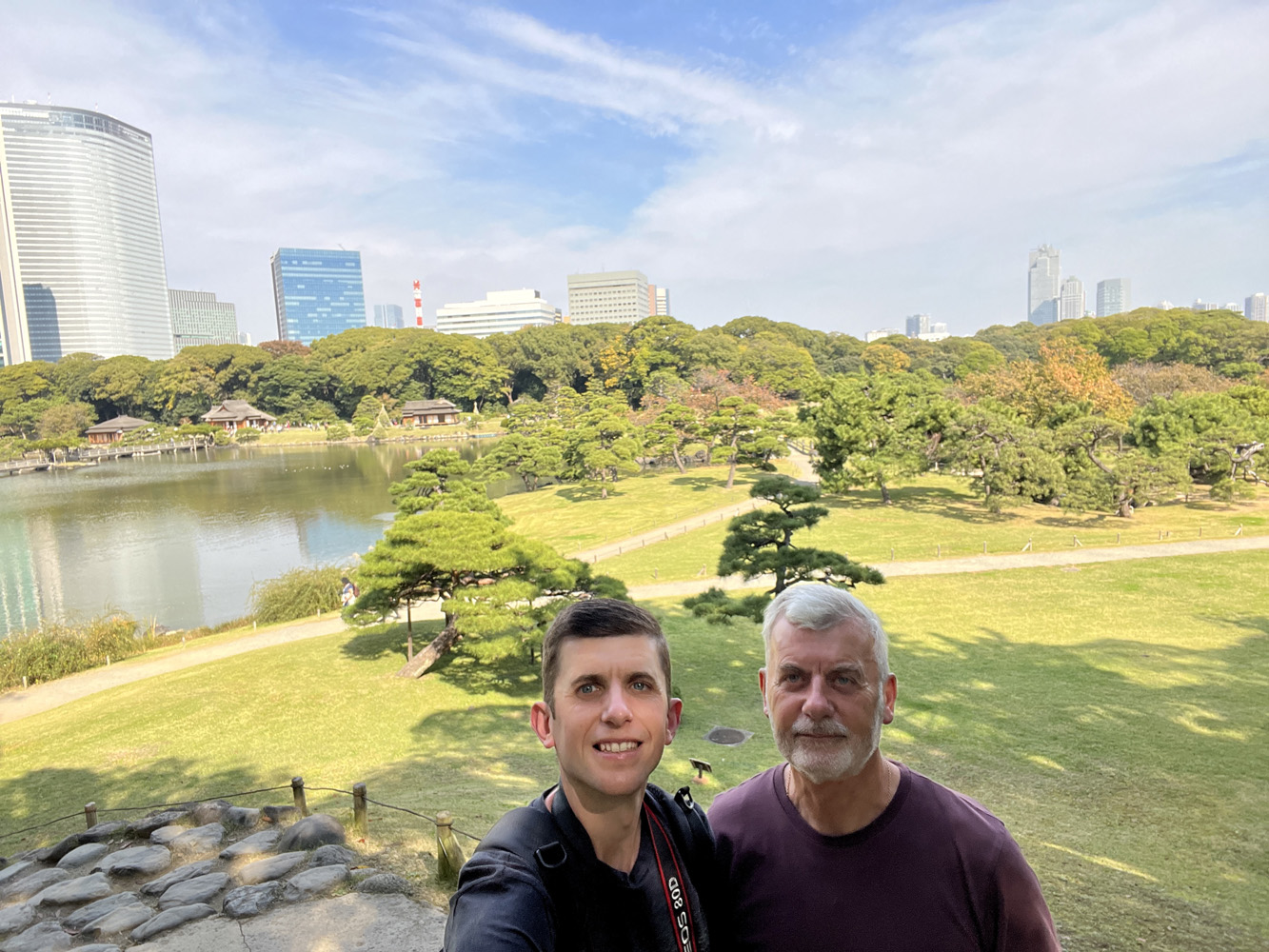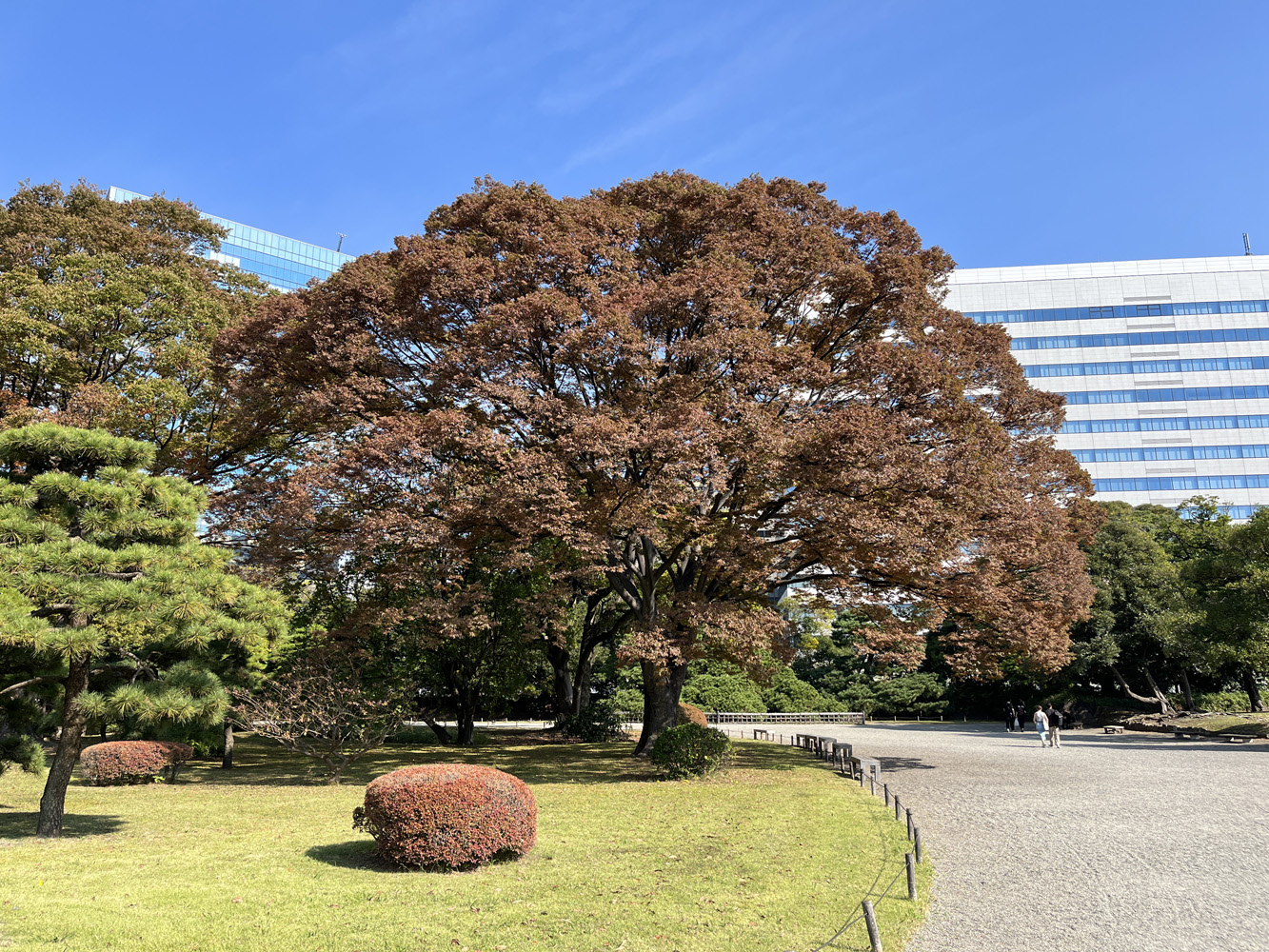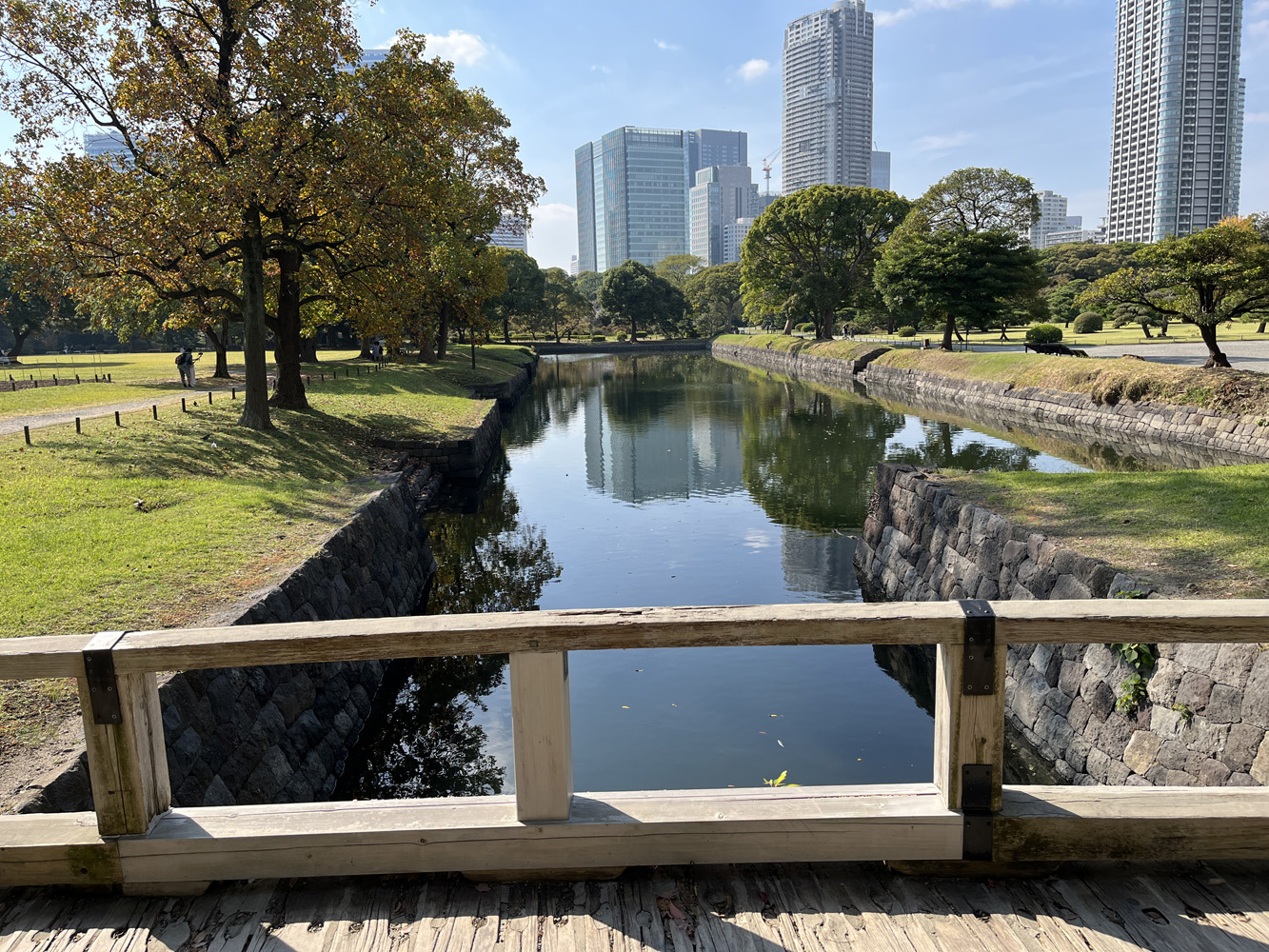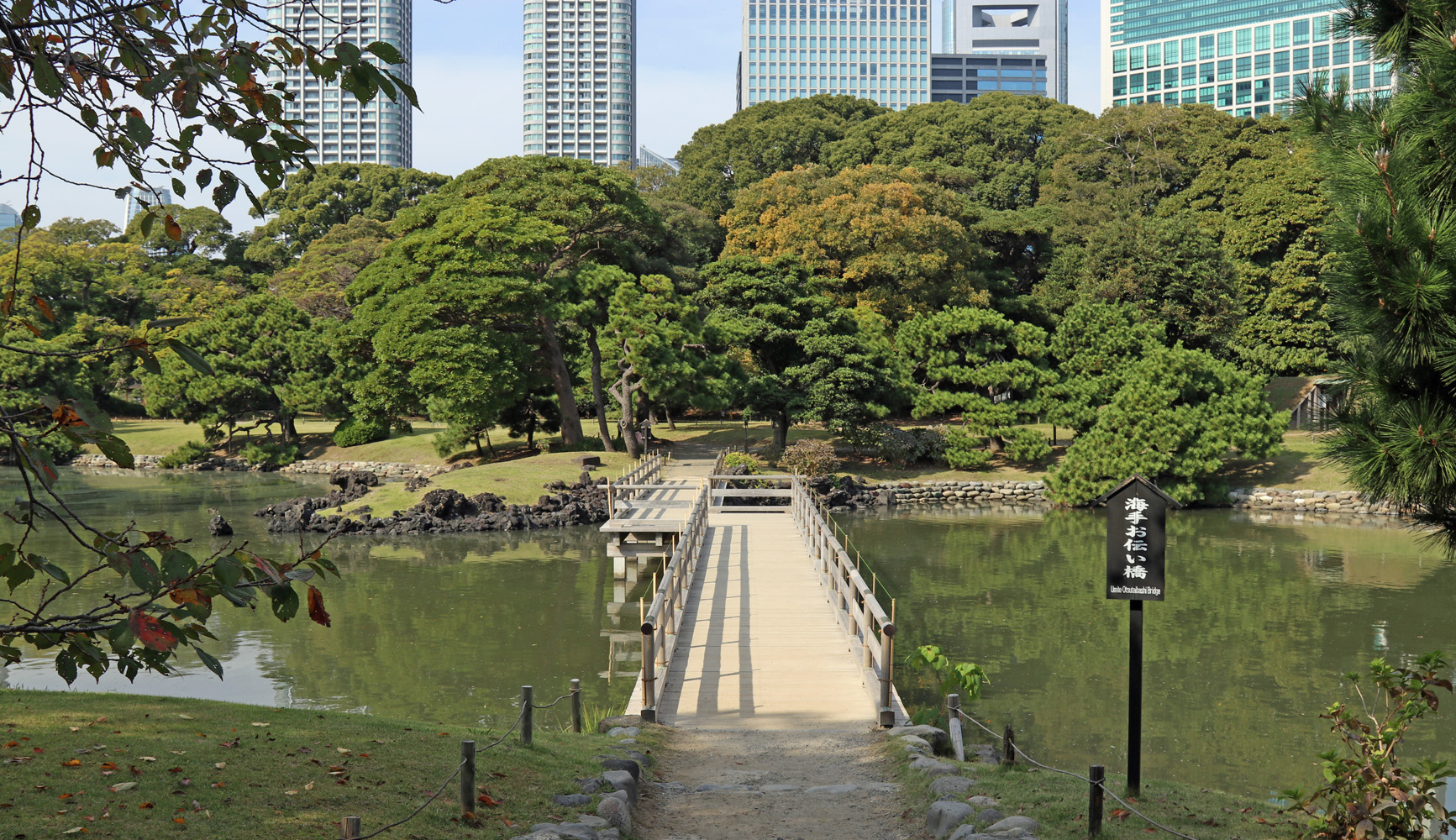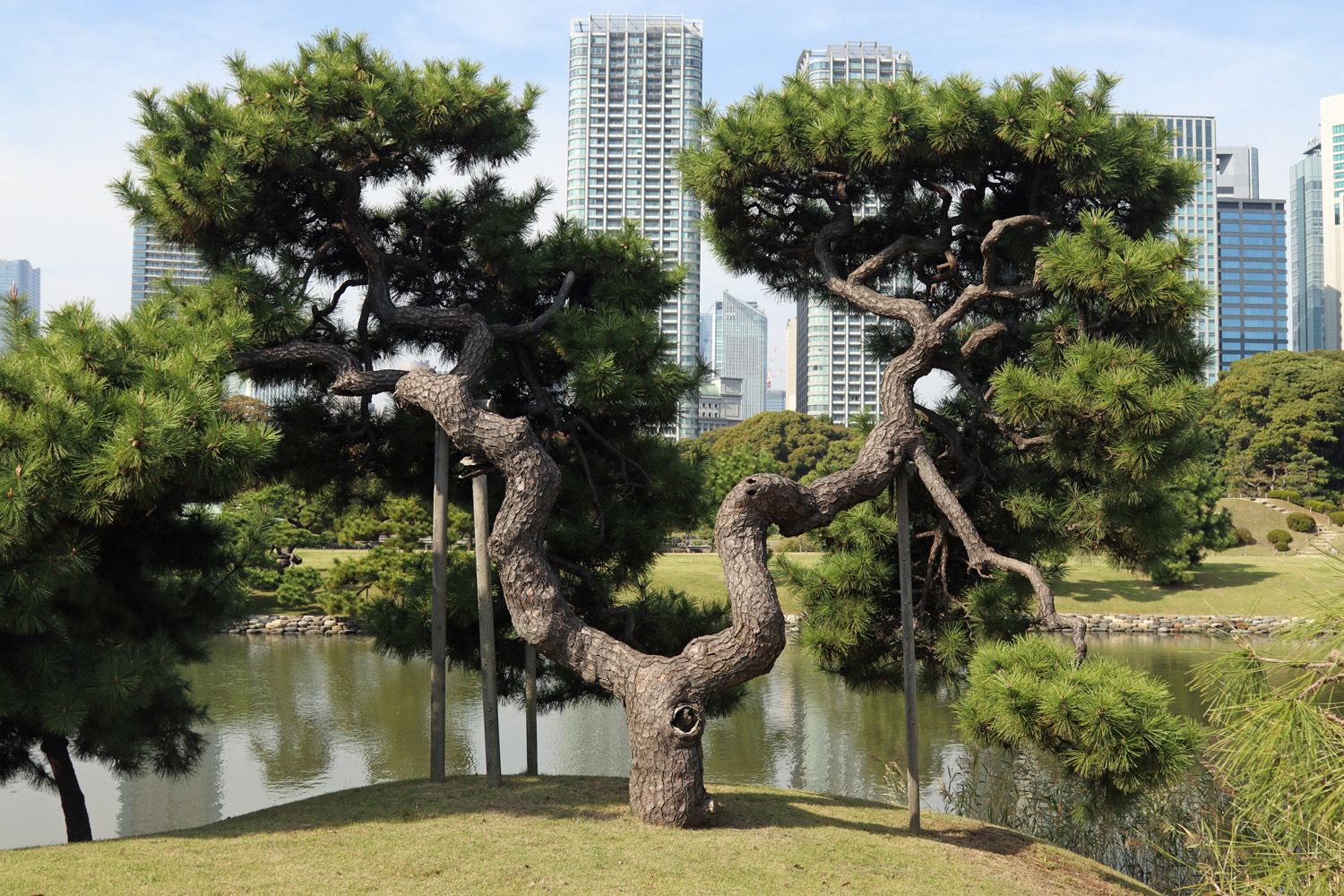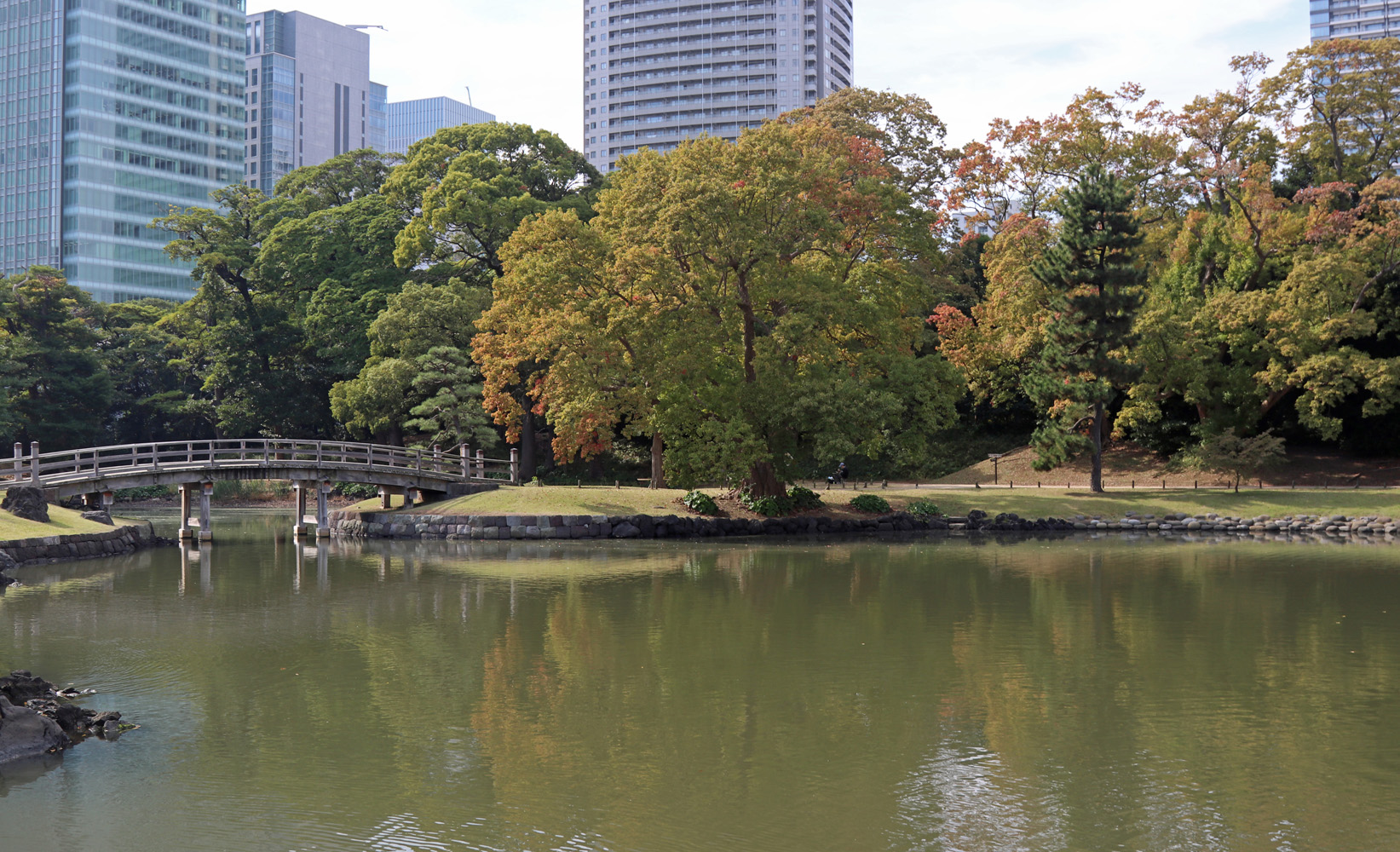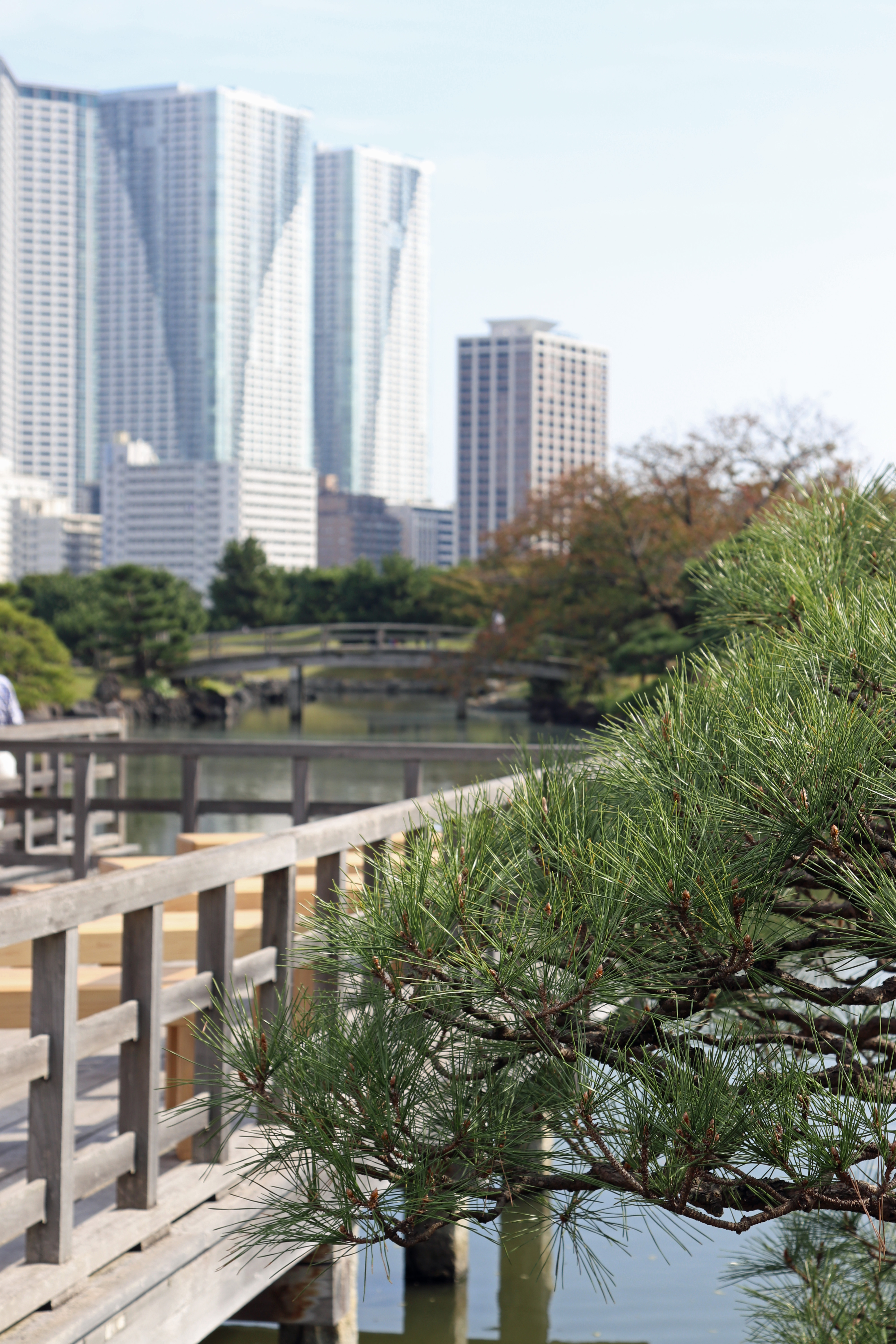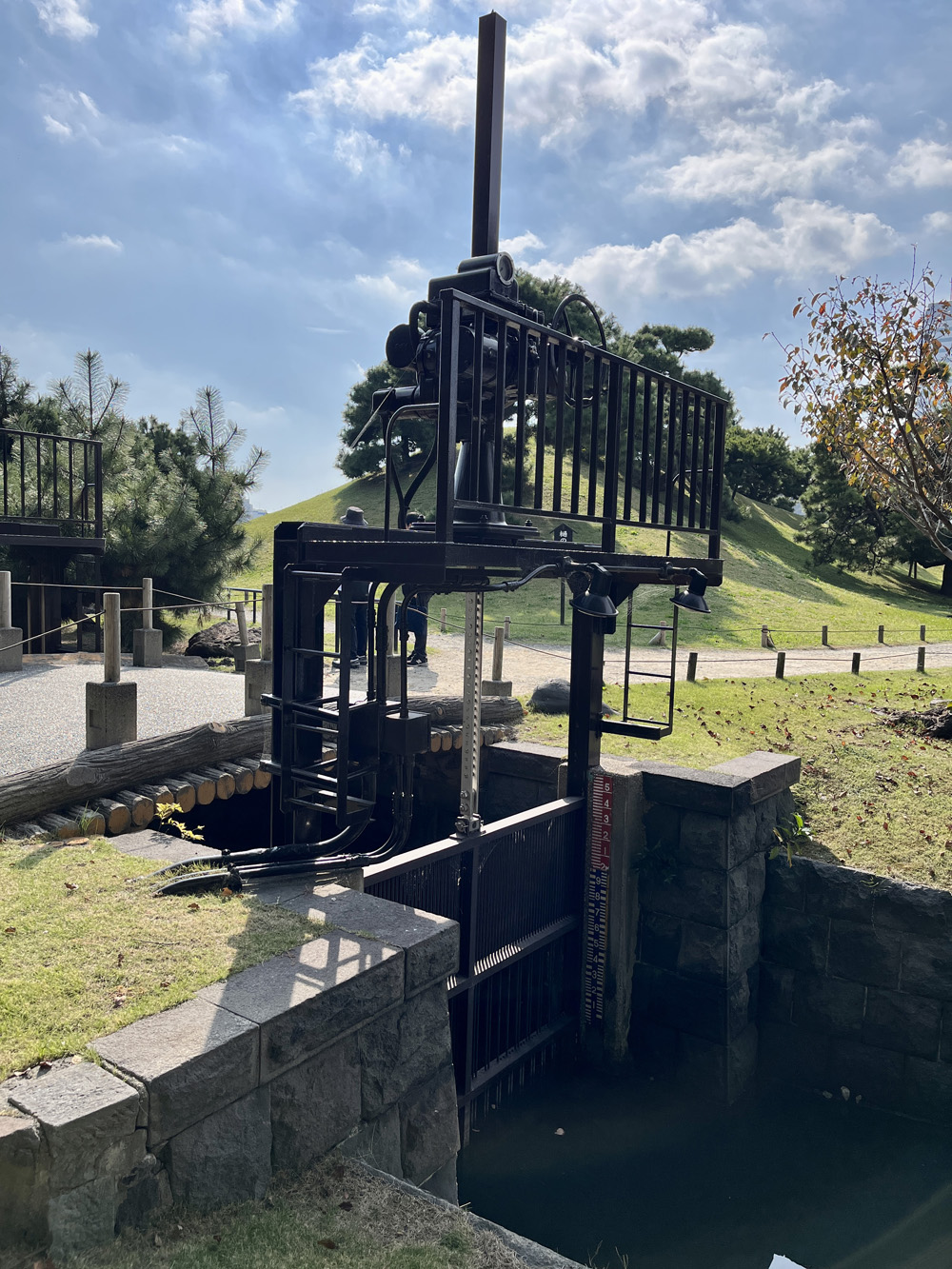Hama-rikyu Garden & Ginza District
For this trip, this was our final day in
Tokyo but before we say goodbye and head south to Shin-Osaka we had
planned to spend the morning visiting the third garden on our list in Tokyo the
Hama-Rikyu Garden. We had been recommended to visit this garden by our Japanese
friend and tutor. First, we had to pack and checkout of our hotel. We asked to
leave our cases in reception till later in the day which they agreed, which saves
time and money, as normally the only
other alternative is to use a locker in the station, for around 1000¥
or £6 for the day…which isn’t too bad, but we have found
the lockers tend to go fast!
Before heading off we had a quick breakfast and coffee to fuel up! The garden was in walking distance approximately 25 mins at a fast pace, with the route taking us through Ginza, being Tokyo’s premier upmarket shopping district, which we would take in more on the way back. With the entrance to Hama-rikyu being at the end of the main Ginza Street.
Coming off the main street we walked over a bridge to the gardens entrance, the admission fee was only 300¥ (£1.60), although it was quite early in the morning there was still a steady flow of visitors, mainly local Japanese. Hama-rikyu is also a 10-to-15-minute walk from JR Shimbashi Station and also a 5-to-10-minute walk from Shiodome Station.
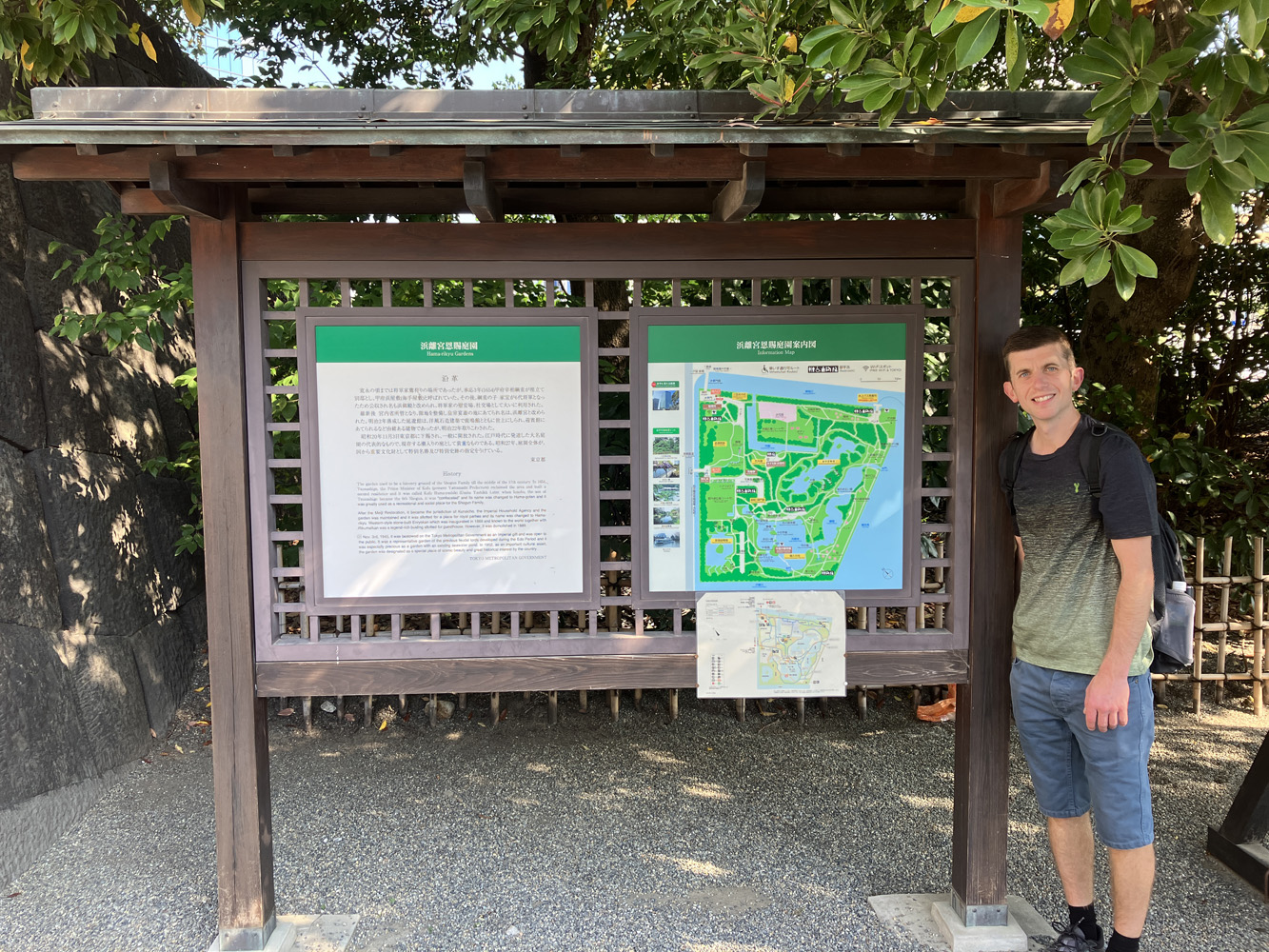
From the admission entrance, there was a large gravelled pathed area with lawn islands with stunning Japanese Black Pine Niwaki trees situated all over…it was certainly an impressive start!
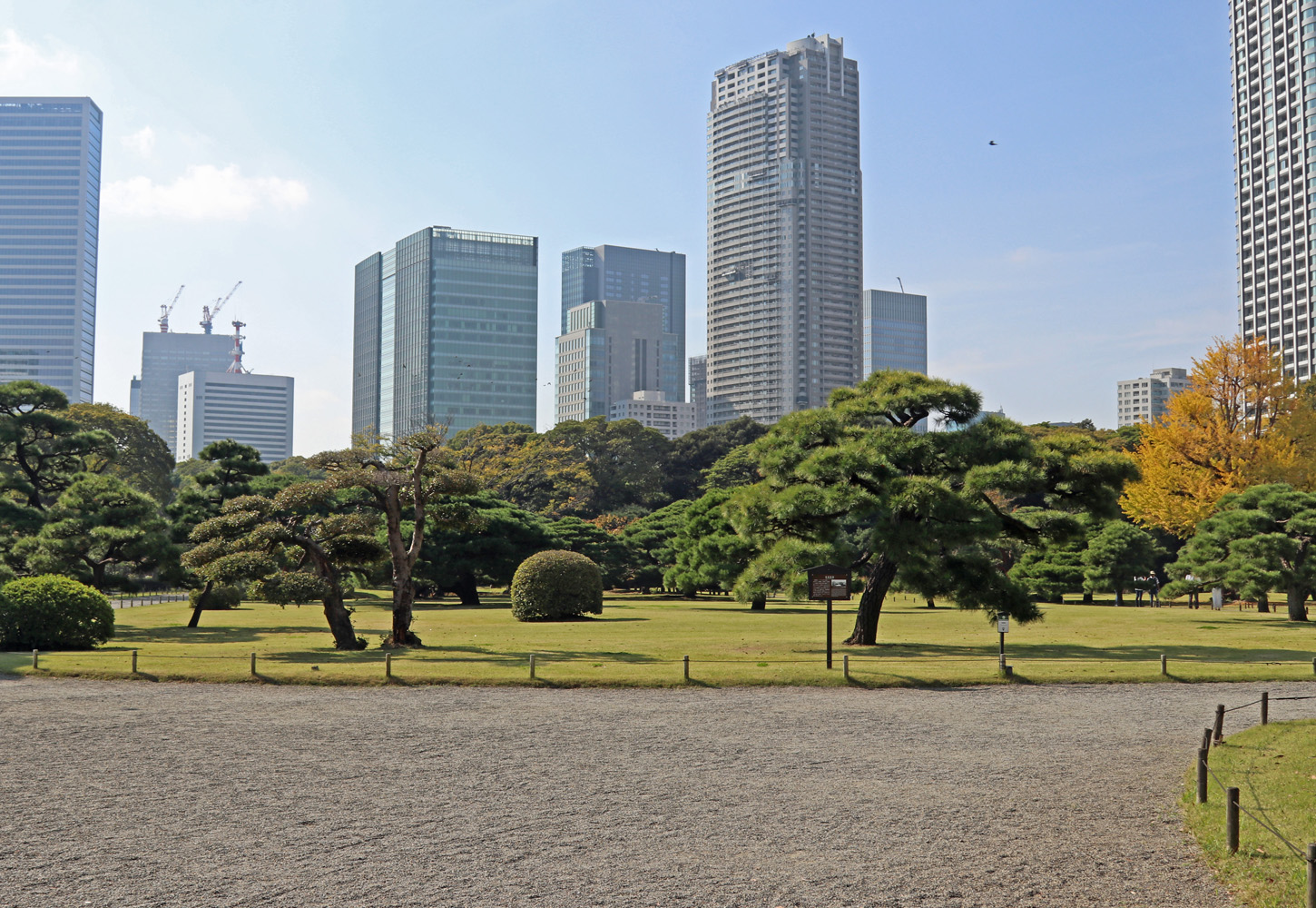
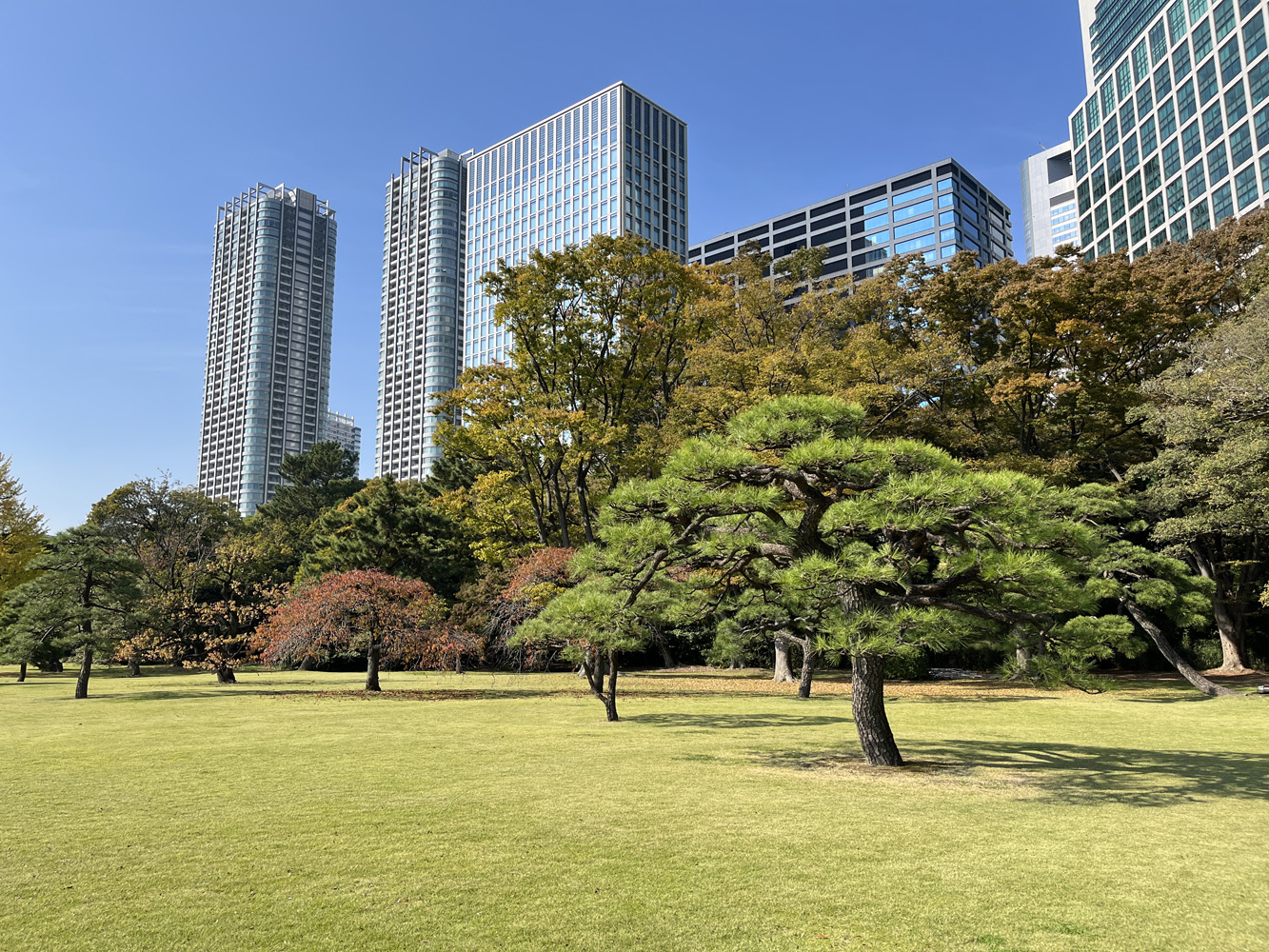
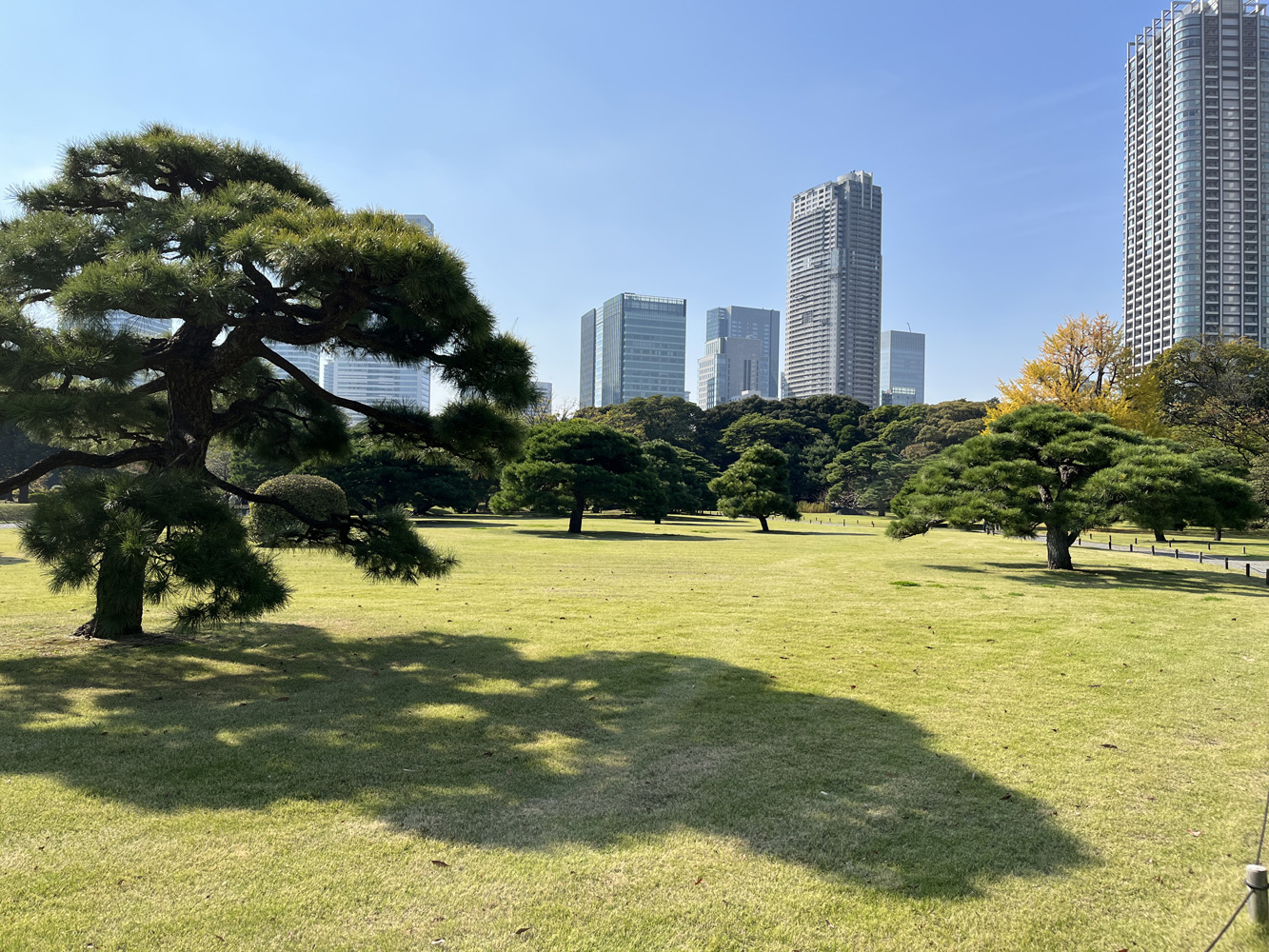
Reading our leaflet map, we decided to walk around the garden clockwise, so we first headed off to the flower fields, which were in full bloom and full of wildflowers…certainly a different site to see in a Japanese garden.
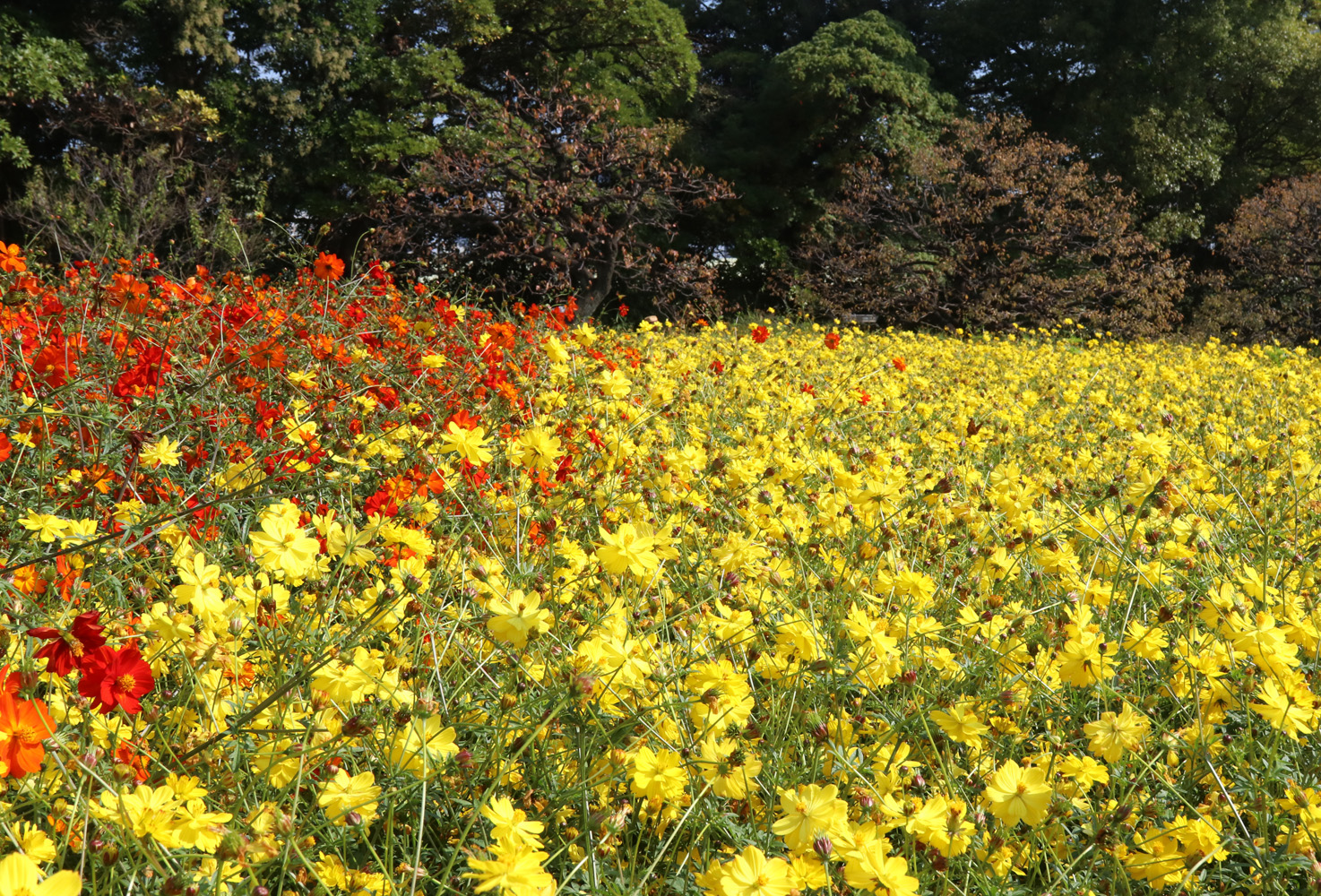
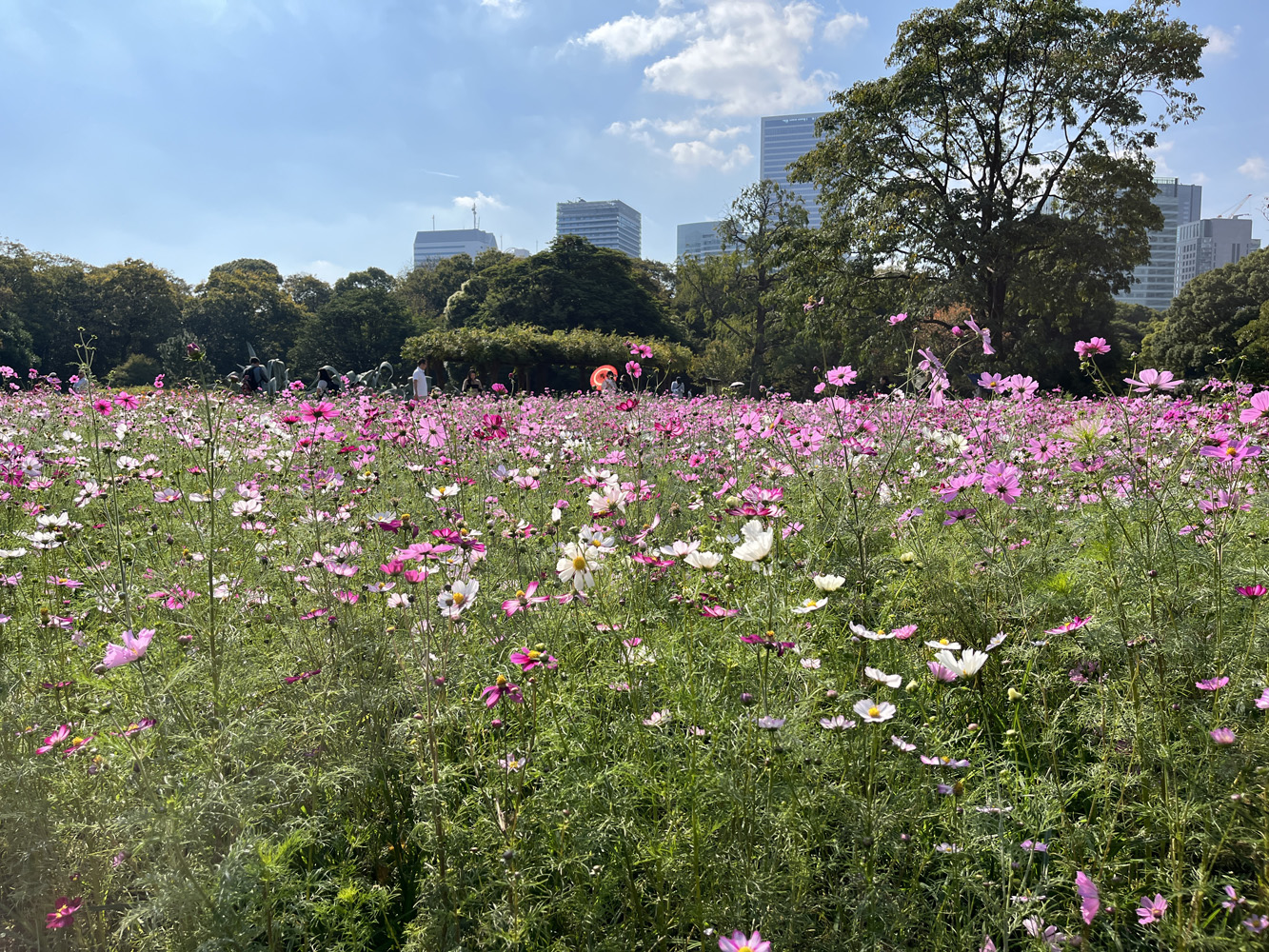
From the flowers the traditional Japanese garden began, and it was fabulous with lots of styled and maintained Niwaki trees surrounding a number of lakes. The garden actually runs alongside a large tidal river with one unusual aspect that it has a seawater pond. The pond has a style to draw in seawater and change its appearance by the flow of the tide. The pond is the only remining seawater pond from the Edo era within Tokyo. It has lock gates that open and close with the rise and fall of the water level in Tokyo Bay. Saltwater fish such as striped mullet, young sea bass, goby, eel and crabs live in the pond.
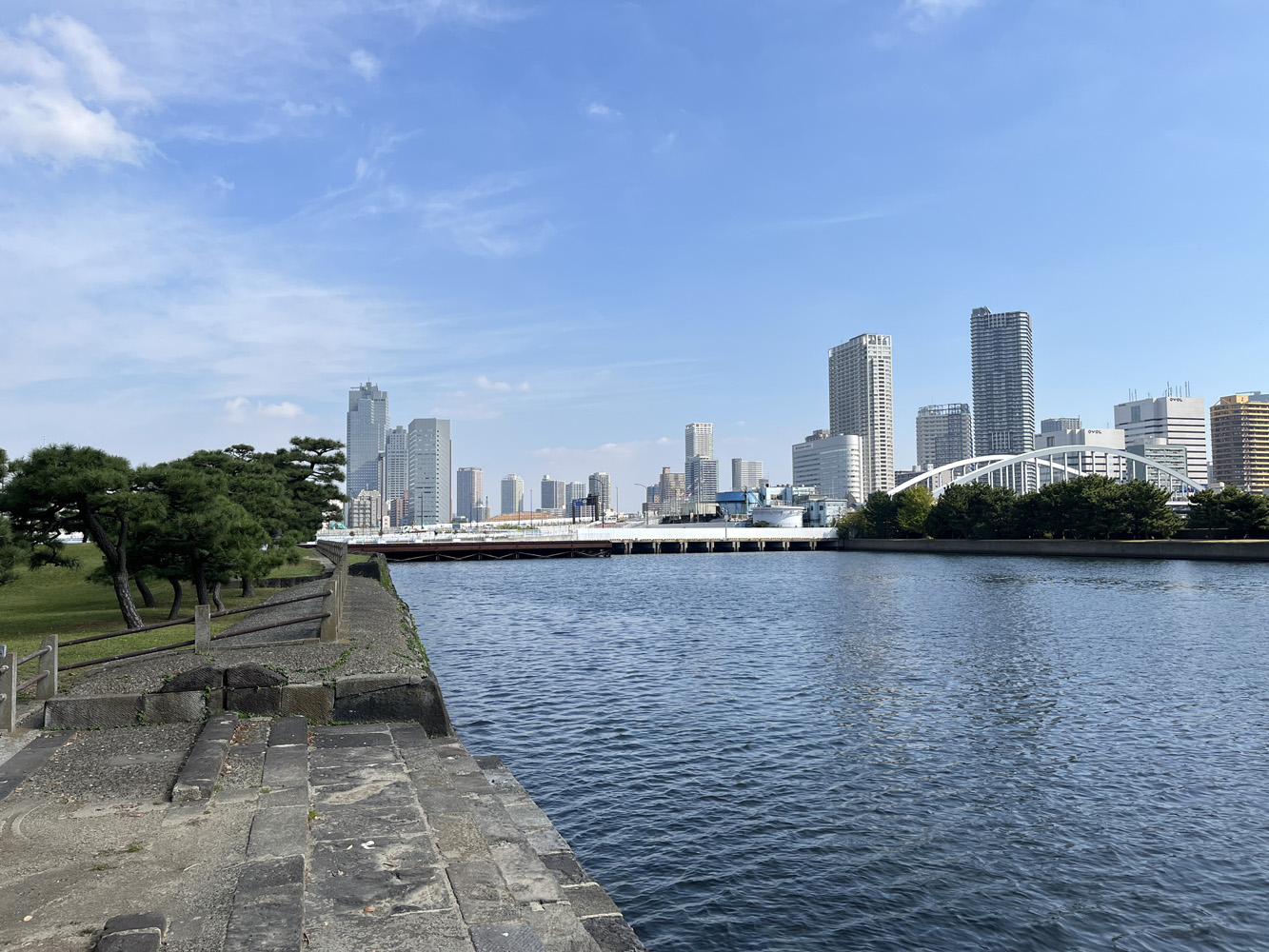
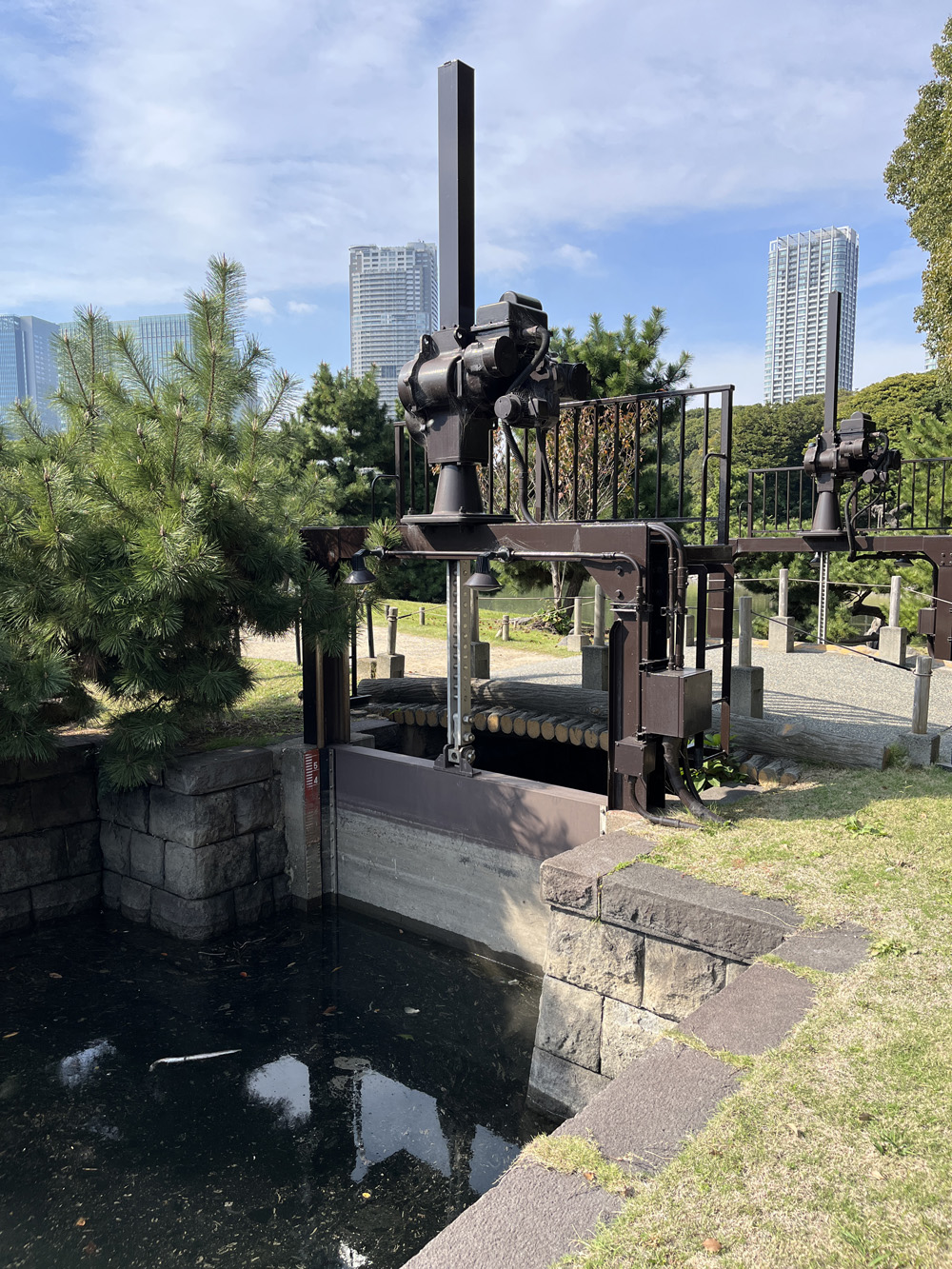
Hama-rikyu is a Tokyo metropolitan garden
and is a cultural heritage site for the city combining history, culture and
nature that has continued from the Edo, Meiji and Taisho eras. The garden has
had many purposes over the years and was originally the Tokugawa Shogun family
garden and functioned as an outer fort for the Edo period. In 1654, the fourth
shogun younger brother, built his detached house called Kofu Hama-yashiki,
which means ‘Kofu beach mansion’ on land reclaimed from the sea. Later, when
the 6th shogun house became part of the family residence, and it then came to
be known as Hama-goten or beach palace. Thereafter, the creation of the several
gardens and improvement to the grounds were carried out by the following
shoguns and completed as it’s almost seen today by the 11th shogun.
After the Meiji Restoration the garden became a detached palace of the Imperial family, changing its name to Hama-Rikyu. The Imperial family donated the garden to Tokyo City in 1945 and after restoration work opened to the public in 1946 as Hama-Rikyu Gardens.
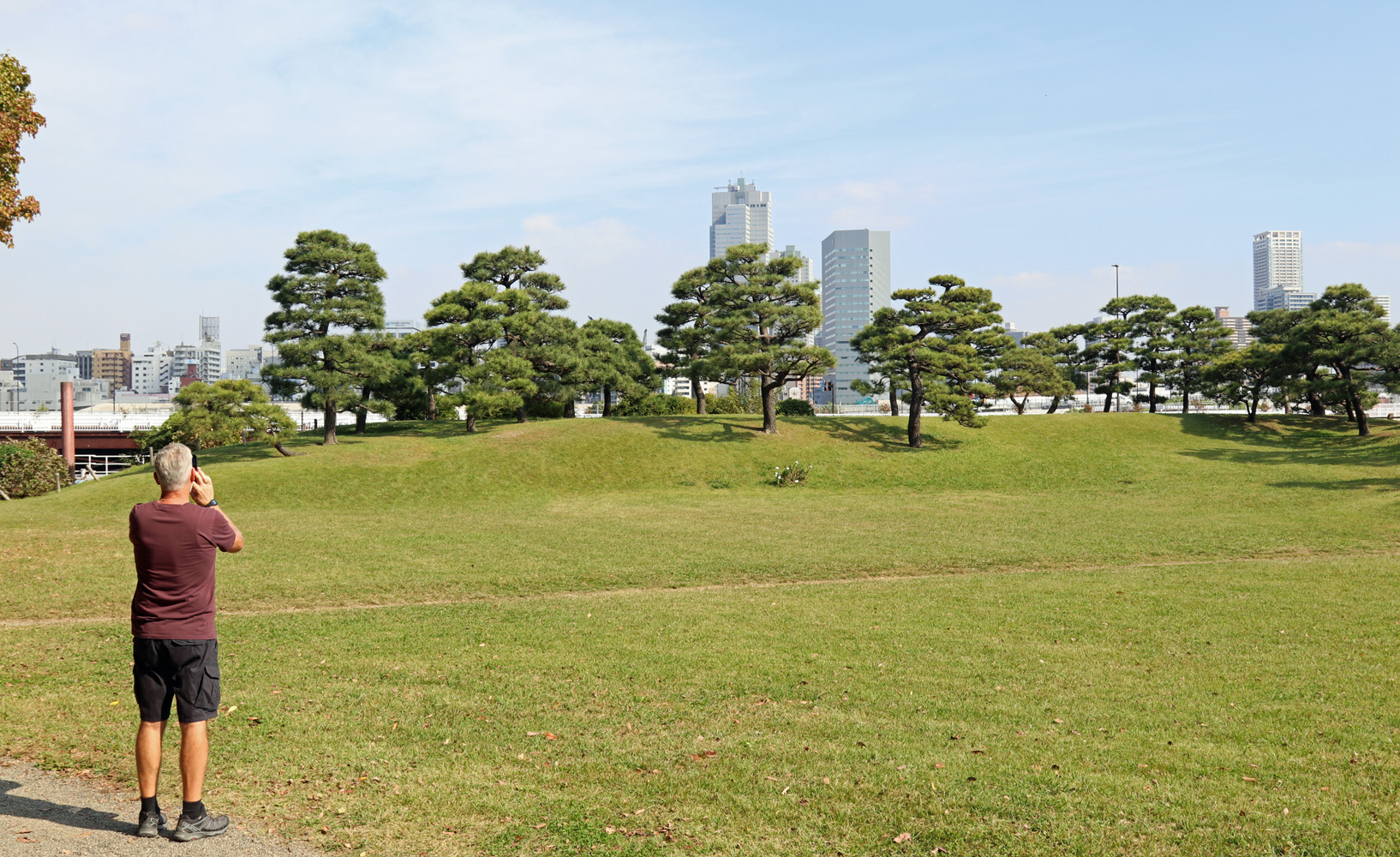
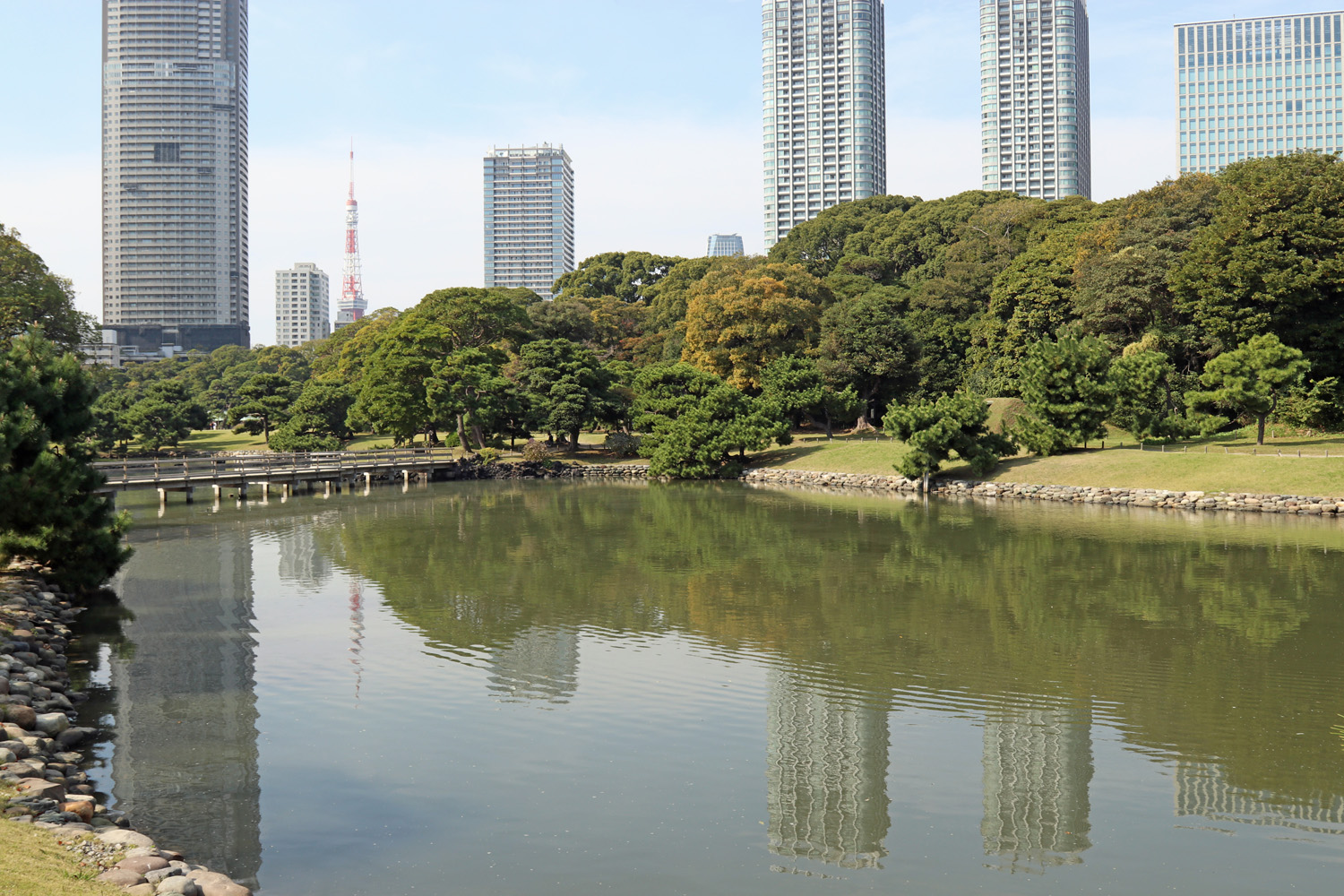
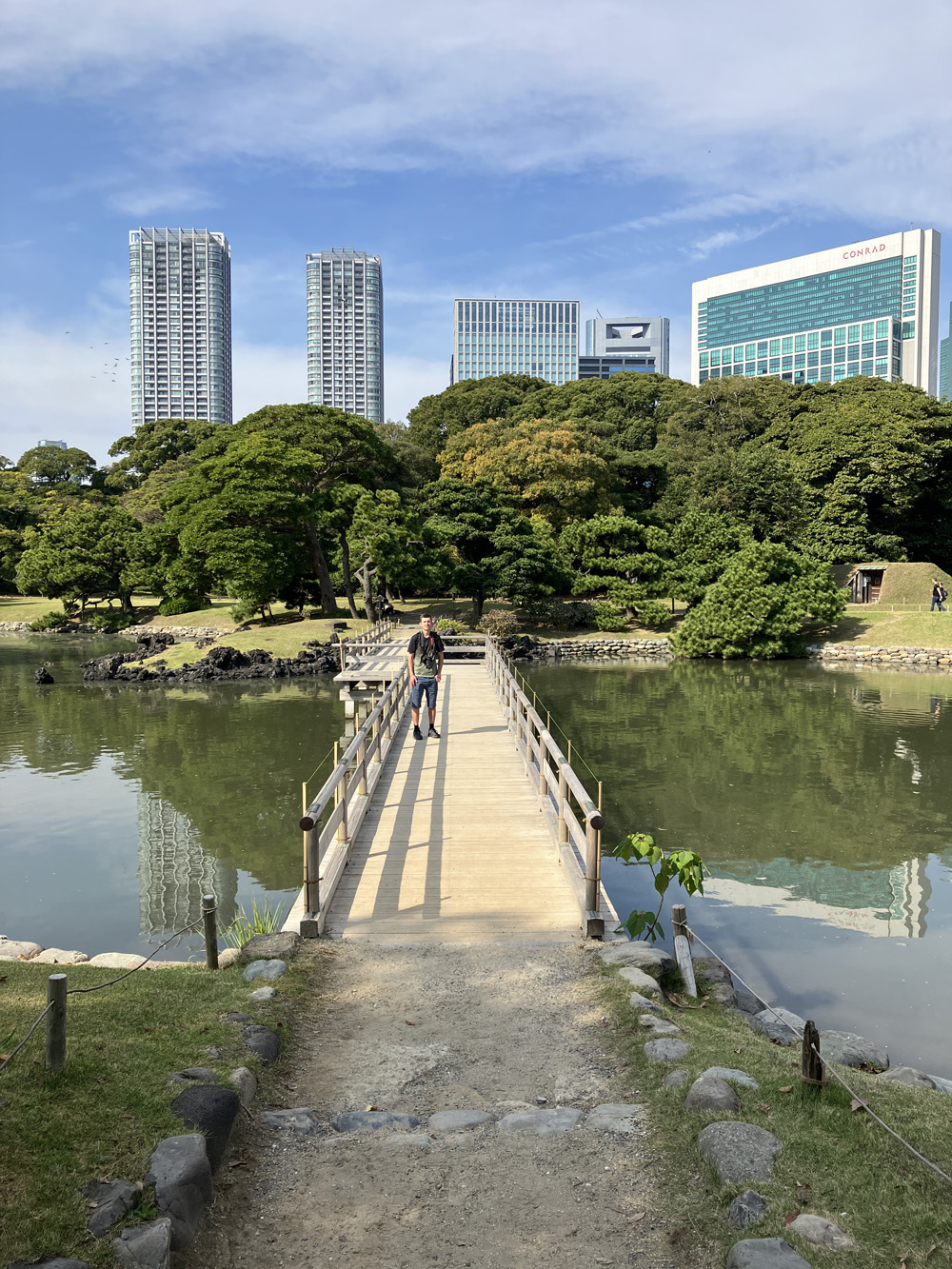
The garden today is a strolling style and said to be attractive in all seasons, of which it was stunning in the autumn when we visited. As mentioned, we walked around the garden clockwise, the landscape, ponds and trees were superb, making the garden very interesting and enjoyable to walk around. There were also a number of bridges positioned around the garden, with several bridges connected together looking more like a jetty, crossing small islands in the pond.

The garden took the morning to walk around, we’ll let the photo’s do the rest of the talking! As we’ve mentioned before about the gardens in Tokyo, this one felt the same, like an oasis hidden inside the massive city that surrounded it!


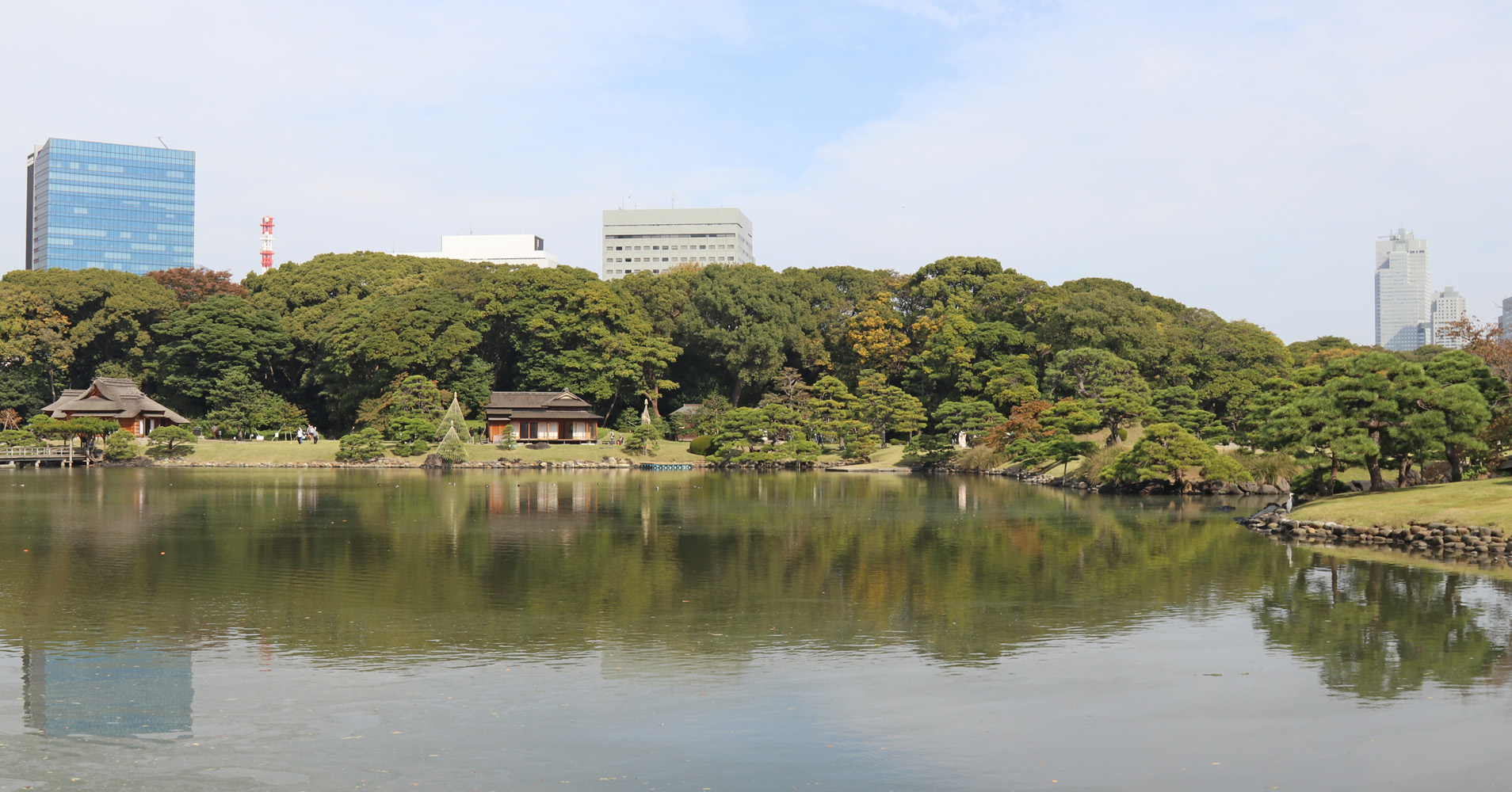
There
must have been hundreds of Japanese pines in the garden, but the one that beat
them all was the Sambyakunen-no-matsu (old pine) which was said to be about 300
years old! It was in a bush style with its large trunks spreading out low.
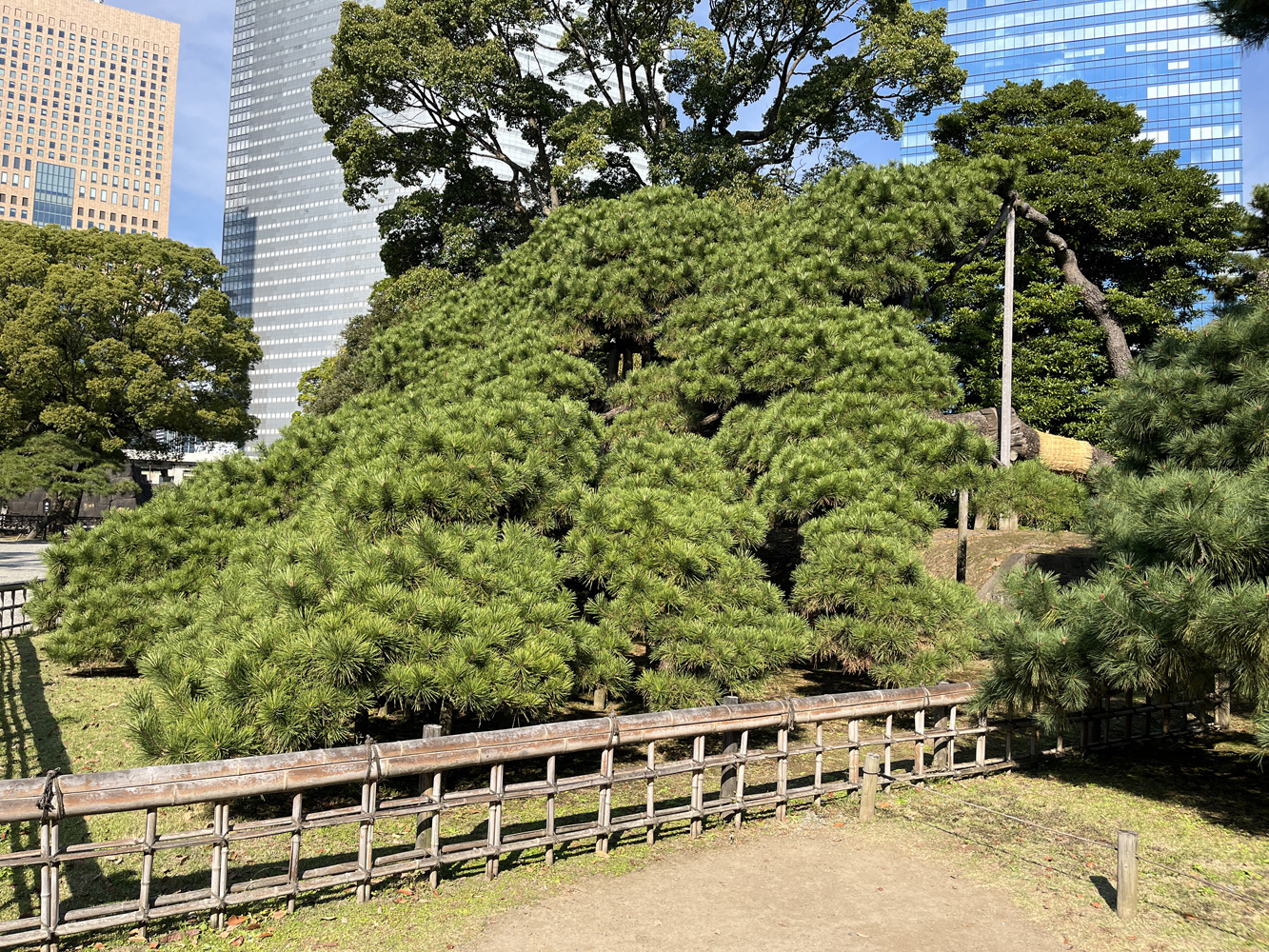
Like all the gardens in Japan, it was extremely well maintained, and it was interesting to watch the gardeners as they prepared some of the delicate black pine trees for winter.
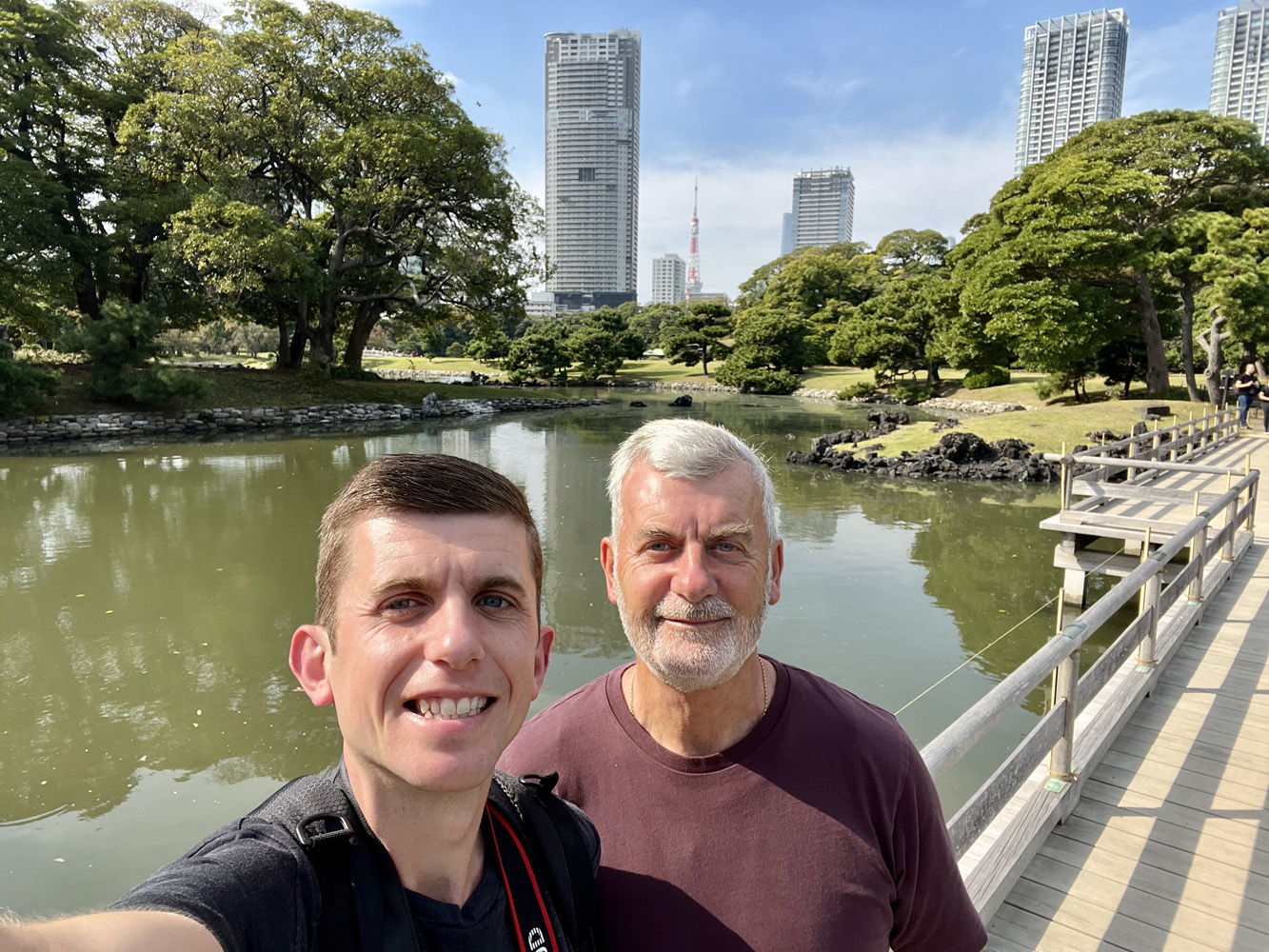
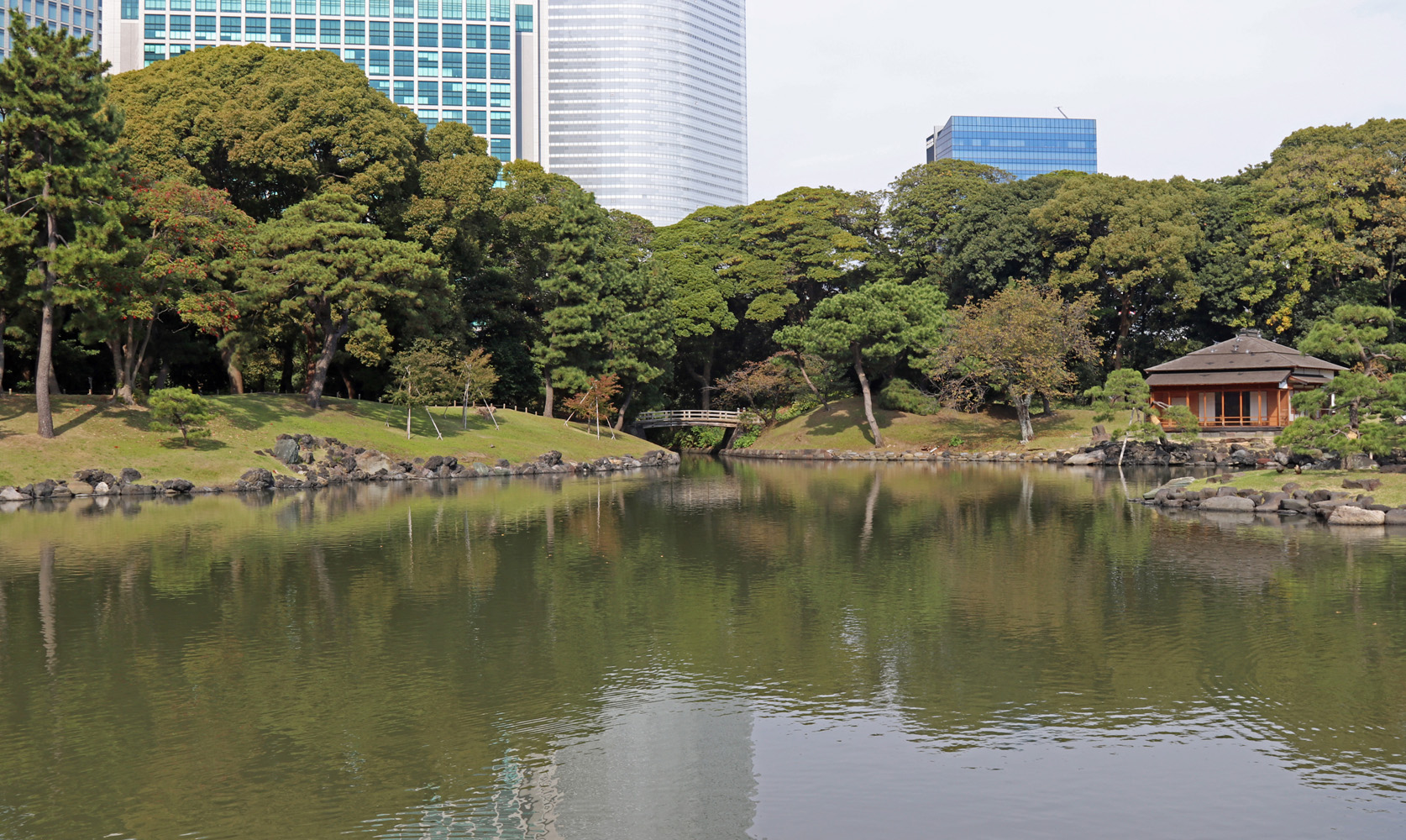
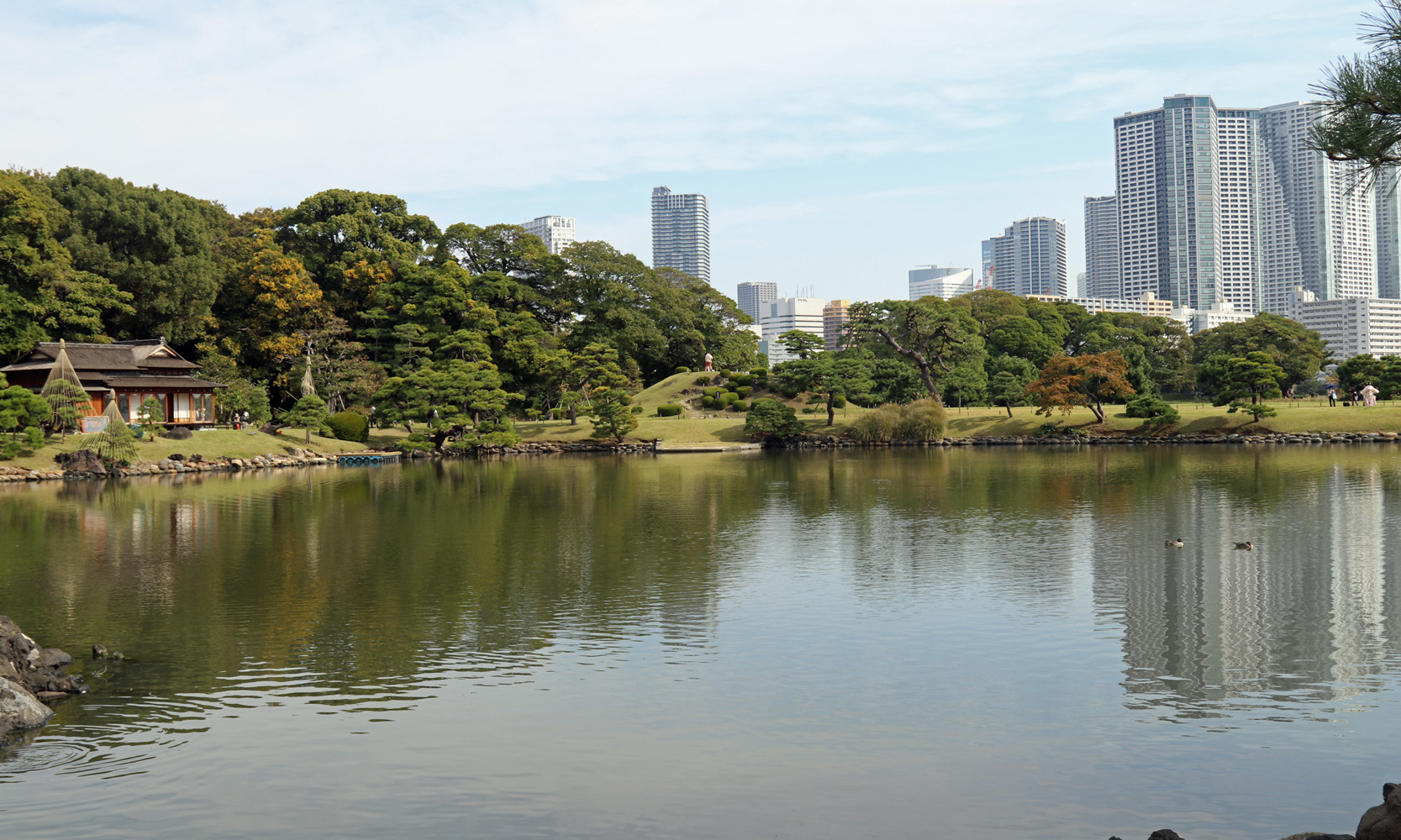
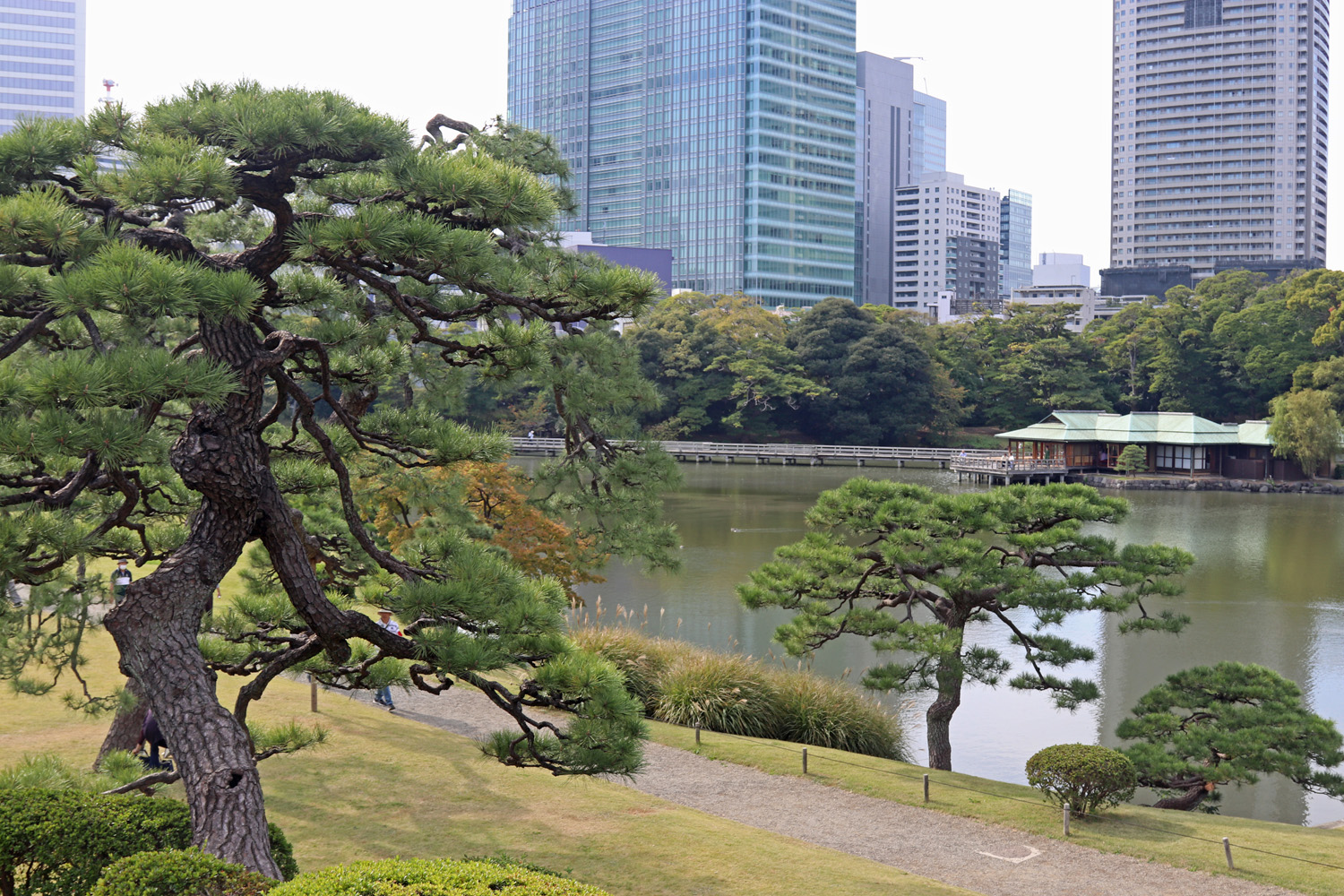
So, after taking hundreds of photos, it was time to move on and head back for our cases. But first we would have to walk back through Ginza, this time we noticed something was different? The whole main Chuo Dori Street had been closed to vehicles, so people could walk along it, and restaurants could place tables on it. It certainly totally changed the feel of the area. It was certainly strange to see people just walking around in the middle of the road…taking pictures…so I bet you can guess what we did!

Ginza is the most famous upmarket shopping, dining and entertainment district in Tokyo, with one square metre in the centre of the district said to be worth over 10 million yen, that about £55,0000! Which makes the land some of the most expensive in Japan! Interestedly the site where the Ginza district is today was once a silver coin mint from 1612 to 1800, hence the name Ginza meaning silver mint, which the district was eventually named. After the Great Kanto earthquake Ginza developed into an upmarket shopping district.

After a nice walk-through Ginza, we headed back to the hotel and collected our cases, we had a little spare time so popped into a nice café and treated ourselves to a nice coffee and some posh sandwiches. Then it was off to the Tokyo station to catch the Shinkansen to Shin-Osaka.
On
arrival, as we now know Shin-Osaka very well so navigating through the station and
finding our hotel was fairly easy. Checked in, a quick freshen up and we headed
back out as it was dark now and time for a bite to eat. We headed for a nice
restaurant which we have been before and on tonight’s menu, was Japanese curry
and pork cutlets ‘oishi desu’.
This
day we walked just over 7 miles.
